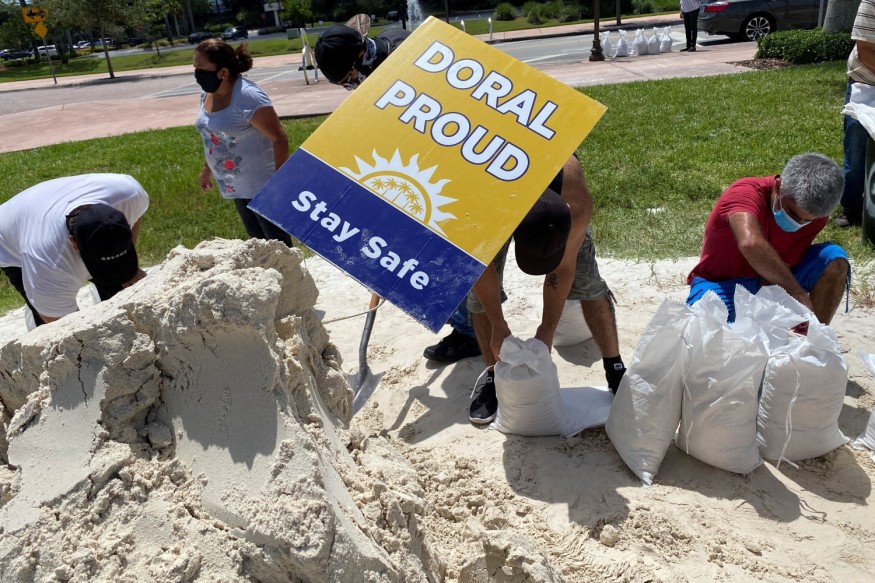Hurricane Isaias travels through the Atlantic as Florida and the Bahamas brace for disaster. As of August 1, Saturday, 2 AM, the National Hurricane Center (NHC) reports that the storm was roughly 115 miles away south-southeast from Nassau, the Bahamas. It was monitored to be moving northwest with a speed of 14 mph. You can track the hurricane here.
So far, the NHC says it has 85 mph sustained winds; it is expected to go over the Bahamas central region on Saturday morning, and then near or over the northwestern Bahamas during the latter part of the day. It is then anticipated to go near Florida's east coast on the afternoon of Saturday up to Sunday. Last Thursday, the exterior of the storm barreled Puerto Rico before going to the Dominican Republic.
READ: Storm-Proofing Miami Could Cost 4.6 Billion Dollars

According to the NHC, Bahamas has imposed a hurricane warning for the central and northwestern parts of the country; Florida has as well, in the Brevard-Volusia County to Boca Raton line.
Hurricane Isaias is anticipated to have rain of up to eight inches in the Bahamas, while it may be up to six inches in east-central and southern Florida, including the mid-Atlantic and Carolina states. Georgia and northeastern Florida, NHC said, may get rain up to two inches.
Possible Flooding
The heavy rains can cause a storm surge, and, combined with the tide, may flood normally dry locations as rising waters move inland. In Florida, the water can reach four feet above the ground, and five feet above Bahamas' normal tide level. In the Carolinas and possibly Virginia, heavy rainfall can cause flooding as well.
State of emergency
Even if the hurricane's exact path is not known, many states are preparing for it. Roy Cooper and Ralph Northam, governors of North Carolina and Virginia, respectively, have declared a state of emergency last Friday in their respective jurisdictions, ahead of the arrival of Isaias.
Dave Kerner, mayor of Palm Beach County, relayed that a zone will be evacuated. This area primarily has mobile homes, and residents will be offered six shelters on the morning of Saturday. These shelters will be in middle schools, high schools, and a recreation center.
The Effect on Pandemic Activities
State-supported walk-up and drive-thru testing sites in Florida have been closed last Thursday in expectation of the storm.
According to Mayor Kerner, Palm Beach is prepared. Temperature checks will be conducted in the shelters, and evacuees will be divided into family units. They will be given masks as needed, and the police will help ensure social distancing.
Bahamian authorities also set up shelters, with at least ten shelters readied with supplies in New Providence. The government also activated the Royal Bahamas Defense Force and health ministry personnel.
In 11 counties in Florida, testing sites will stay open, most of which are located on the Panhandle or west coast, according to the Florida Division of Emergency Management.
According to the division, all sites are anticipated to be opened by 8 AM on August 5. In Miami, testing has stopped, and will likely remain shut down till Tuesday or maybe Wednesday, according to Mayor Francis Suarez. He says an information gap of four to five days will occur.
© 2025 NatureWorldNews.com All rights reserved. Do not reproduce without permission.





